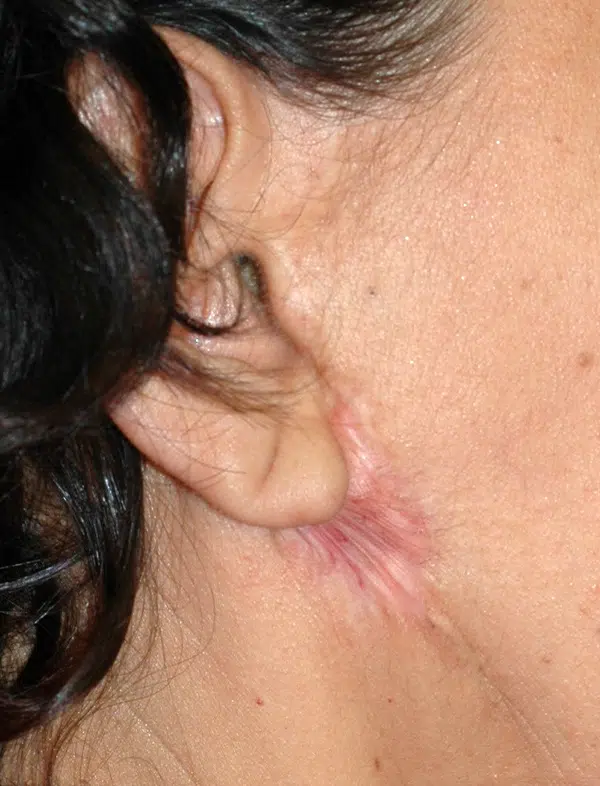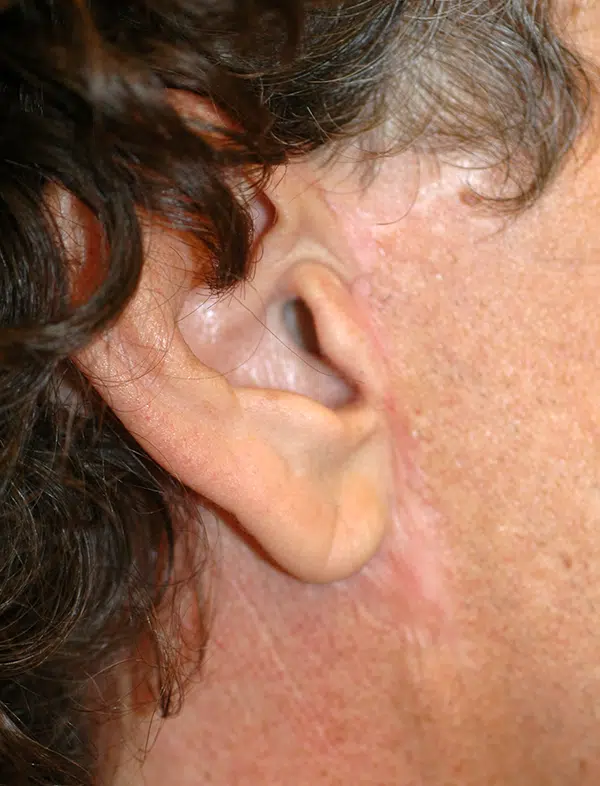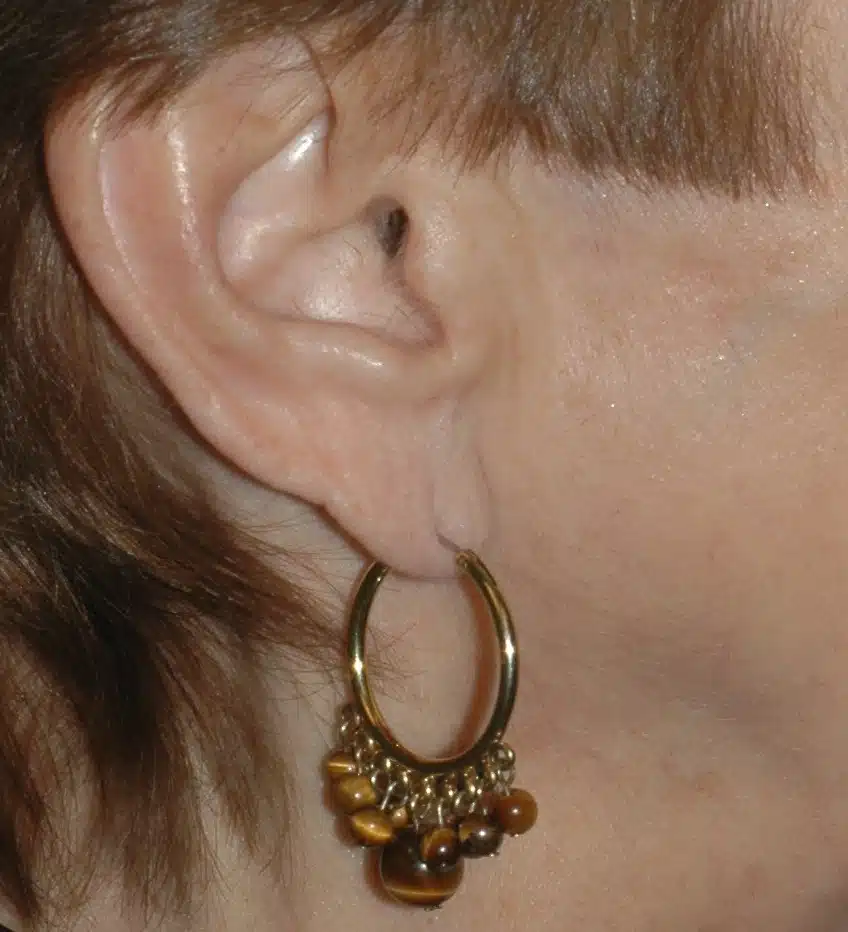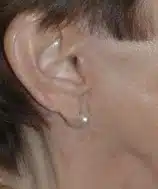After a facelift surgery, you may be concerned about scars and how they might affect your appearance. Proper skin care following your operation is crucial for optimal healing and minimizing any visible scars. Dr. Andres Bustillo, a board-certified facial plastic surgeon, shares his expertise in reducing and taking care of scars after such a procedure.
Dr. Bustillo brings a wealth of knowledge from his experience in cosmetic surgery. He stresses the importance of taking action early to prevent scarring, taking good care of your skin right after the surgery, and keeping up with skin care in the long term. His guidance aims to support you in achieving a smooth and natural-looking result after your facelift surgery.

Easing Scars After Your Facelift
- Following your surgeon’s aftercare instructions carefully can significantly improve scar healing after a facelift.
- Keeping the scar area clean and moisturized is key to preventing infection and promoting better healing.
- Sun protection is crucial for facelift scars, as sun exposure can darken and worsen the appearance of scars.
- Silicone sheets or gels can be used under a doctor’s guidance to help facelift scars heal smoother and softer.
- Gentle massage of the scar area, once healed and approved by your surgeon, can improve the appearance and flexibility of facelift scars.
The scars from a deep plane facelift, performed by a Facelift qualified surgeon like Dr. Bustillo, will be imperceptible.. This is because the incisions are all hidden inside the hair, behind the tragus (post-tragal), and in creases. One of the biggest “tip-offs” to facelift surgery is a visible scar.
Unsightly facelift scars may be visible for several reasons. The number one reason the scars are visible is due to excessive tension placed on the skin. When an incision is closed with tension, it heals poorly, and as a result, will widen and become visible (Figures 4, 5). The deep plane facelift has the advantage of placing no tension on the skin, which in turn helps to have scars that are not visible.
The second reason the facelift scar may be visible is placement. The incisions should be placed along natural curves, folds, and inside the hair.

The patient was operated on by another surgeon with poor scars due to excessive skin tension.

The patient was operated on by another surgeon with poor scars due to excessive skin tension.
The following describes the incisions used in the deep plane facelift performed by Dr. Bustillo. The superior portion of the incision is placed inside the temporal hair, completely hidden. As it comes down, it hugs the helix and enters behind the tragus. The tragus is that small round or square cartilage in front of the ear. This part of the incision is known as a “post-tragal” incision because it is hidden behind the tragus. This is in contrast to the “pre-tragal” incision used by some surgeons.
The post-tragal incision completely conceals this part of the incision. The incision then comes down a natural crease between the ear lobule and the facial skin. In the back of the ear, it travels up in the crease behind the ear. It then crosses into the hair, where it is completely hidden. This allows my patients to wear their hair up in a ponytail without any scars being visible. Any incision outside this course has the potential to be visible.
Choosing the right facelift surgeon is a key step in minimizing facelift scars. A facelift specialist knows how important it is to place incisions carefully and use skilled suturing techniques, which are crucial for a beautiful facelift result and the appearance of facelift scars. When you go for your initial facelift consultation, talk about your skin type and tone with the facial plastic surgeon. Since different skin types and tones can influence how well you heal and how visible scars are, this discussion is important.
Getting your skin ready before facelift surgery can really help. Your surgeon might suggest certain treatments to get your facial skin in better shape before the procedure. Picking a facelift expert who is well versed in different techniques, like the ponytail facelift and mini facelift, means they can pick the best approach for your specific face and skin. These methods are especially good at reducing visible scarring.
The initial weeks after your facelift surgery are crucial for taking care of your scars. It’s important to follow your surgeon’s advice closely during this period. Keep in mind that the facelift cost isn’t just about money. It also requires a commitment to proper aftercare to ensure scars are as discreet as possible.
First Steps to Fading Scars Right After Your Facelift
Taking the right steps immediately after a facelift can help reduce scars and ensure a smooth recovery. Proper care should begin right from the beginning of the recovery period. This starts with gently cleaning the surgical incisions, which is vital for fast-healing wounds.
Following your surgeon’s advice on post-surgical incision care is part of effective post-operative care. This care involves keeping the wound clean and applying the recommended ointments to keep it moist. This step helps prevent scabs that could slow down the healing process. Especially during the first couple of weeks, it’s important to minimize any strain on the facelift scars to support better healing and less visible scarring.
Collagen is key to facelift scar healing. A few weeks after your surgery, you might start treatments like collagen induction therapy. This technique boosts the recovery process by encouraging skin regeneration around the surgical incisions. During your initial facelift consultation, you’ll get information about when and how to incorporate such treatments into your care routine for a smoother recovery process.
Keeping Scars at Bay in the Long Run
For those who have undergone facelifts, it’s important to keep scars as invisible as possible. Managing facelift procedure scars effectively involves a combination of self-care and professional treatments, leading to better results in the long run. Here’s what you can do:
- Use Silicone: Silicone gel sheets can significantly aid the healing process by making scars less noticeable.
- Apply Sunblock: Regularly applying sunblock is crucial during and after facelift surgery recovery to protect your skin from sun exposure, which can darken scars.
- Seek Professional Treatments: Exploring treatment options like laser treatments and chemical peel treatments, designed specifically for post-surgery scars, can improve skin texture and reduce scar visibility. Specialists in facial plastic surgery often recommend these cosmetic treatments as part of the recovery process.
Harnessing Nature’s Power Against Scars
Using natural remedies for scar healing after a facelift can be very helpful. These methods are gentle and work well with the body’s natural healing mechanisms. Essential Oils and herbs are known for their healing properties. They can improve skin tone and help the body make its own collagen, which is important for fixing natural skin tissue and making new collagen fibers.
Topical treatments from nature can reduce the appearance of facelift scars and help make the healing skin smoother. They act like a natural facelift, aiding the skin’s recovery and improving the results. Adding these to your care routine can improve the healing process and ensure the recovery goes as well as possible.
Embrace a Healthier You for Flawless Healing
Overall health is key in improving the facelift scar healing process. Effective post-operative care involves more than just treatments at the surgical site. It includes a holistic approach where diet, hydration, and lifestyle choices greatly influence the recovery process.
- Diet: Adding a diet rich in essential proteins and nutritional support for healing can speed up skin recovery and strengthen the skin’s ability to heal efficiently. Proteins are crucial for building new tissue and help in the smooth closing and healing of facelift scars.
- Water: Drinking enough water keeps the skin moist, vital for a healthy facelift recovery period. Being well-hydrated benefits overall health and healing, creating a better environment for the skin to repair.
- Quitting Smoking: Smoking reduces blood flow, preventing necessary nutrients from reaching the skin for repair and regeneration. Alongside a supportive nutrition plan, stopping smoking paves the way for a faster and smoother recovery.
Care after surgery is vital; it includes good nutrition and lifestyle choices. These efforts promote overall health and healing, contributing to a successful recovery process.
Questions about your procedure?
Schedule a consultation with Dr. Andres Bustillo.
Ear Shape after Facelift
The shape of the ear will not change with the deep plane facelift as it is performed by Dr. Bustillo. The natural shape and position of the ear will be maintained after the facelift. (Figures 6, 7). The shape of the ear can change when the incisions are closed with tension or the incisions are not properly designed.
For example, there can be changes to the tragus. The tragus can be pulled forward or simply removed. The ear lobule is a very delicate portion of the ear. It is fat-filled and the skin is very soft. It is therefore inherently weak and susceptible to stretching or pulling by the healing forces. The extreme case is the “pixie ear,” where the ear lobule is pulled inferiorly and blends with the face. It gives a surgical appearance and looks very unattractive. The facelift surgeon must be meticulous in his incision placement and closure to avoid alterations in the shape of the ear.

Patient’s ear before undergoing facelift surgery by Dr. Bustillo.

Patient’s ear after undergoing facelift surgery by Dr. Bustillo. The normal ear anatomy is maintained and all scars are imperceptible.
Knowing When It’s Time to Call the Experts for Scars
If you notice that scars aren’t healing properly, it’s a good idea to talk to a dermatologist or a facelift surgeon. Concern among facelift patients about their scars might suggest complications after the surgery. One common issue is a hypertrophic scar, which is thick, raised, and doesn’t fade over time.
Facelift patients with questions about their scars or those whose scars aren’t showing improvement should seek medical attention. Sometimes, even well-done facelift procedures can result in unexpected outcomes, like hypertrophic scars that need further treatment. Both aggressive treatments and additional treatments might be necessary to handle these issues.
A dermatologist or facelift surgeon can offer specialized advice for those experiencing complications after facelift surgery. They might suggest a range of treatments, from simple applications to more intensive procedures, to help scars look better. Getting professional advice early can make a big difference in the success of the treatment.
If you want to ensure that your facelift looks great but are worried about scars, getting help is key. Dr. Andres Bustillo has over 20 years of experience as a qualified facial surgery expert in Miami, FL. He knows how to reduce and manage scars well. People value him for his skill in creating natural-looking results and for explaining things clearly.
If scars from facelift surgery worry you, consider meeting with Dr. Bustillo for advice. It might be the help you need to feel better about your appearance. Remember, you just need to schedule a consultation once.




